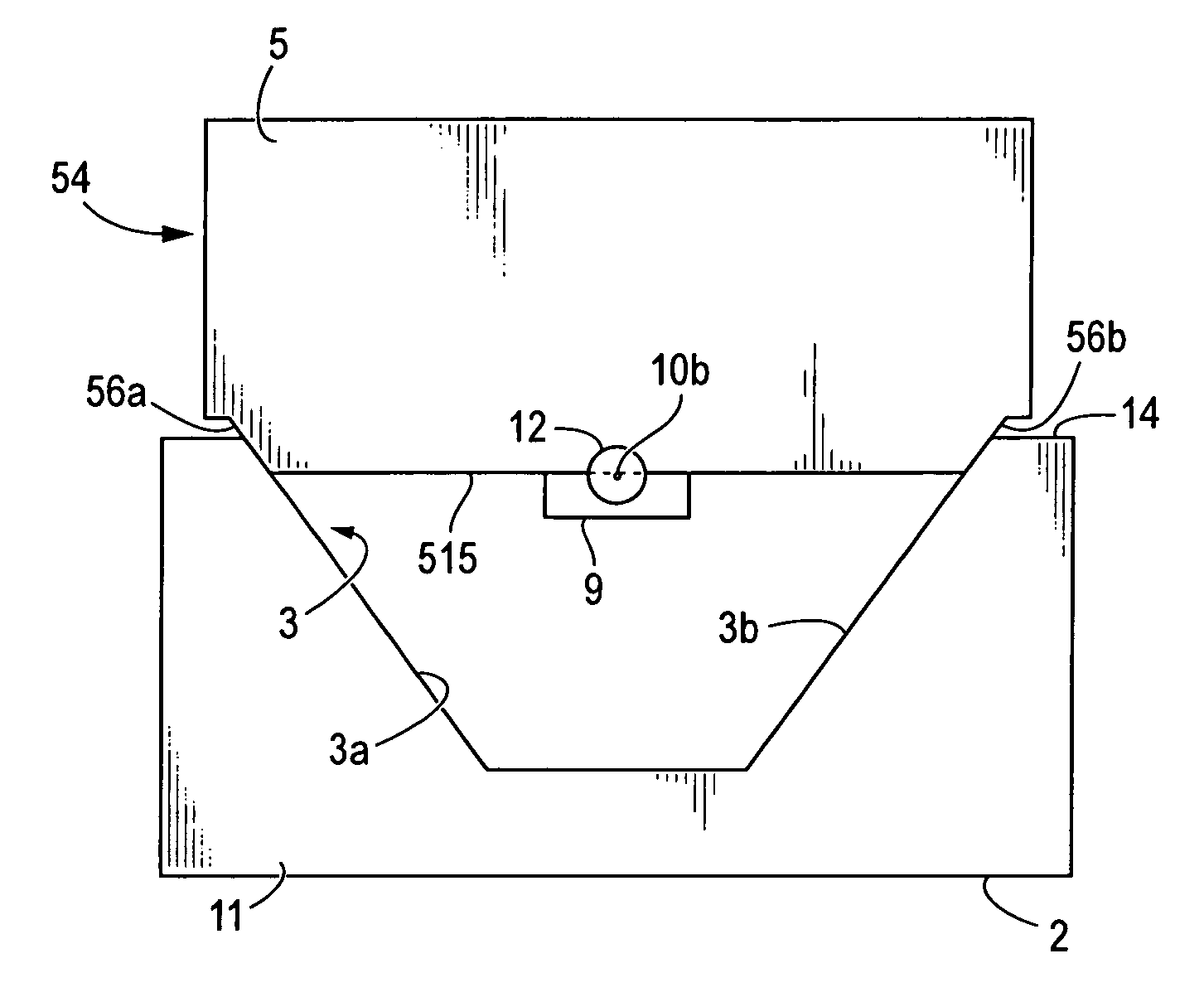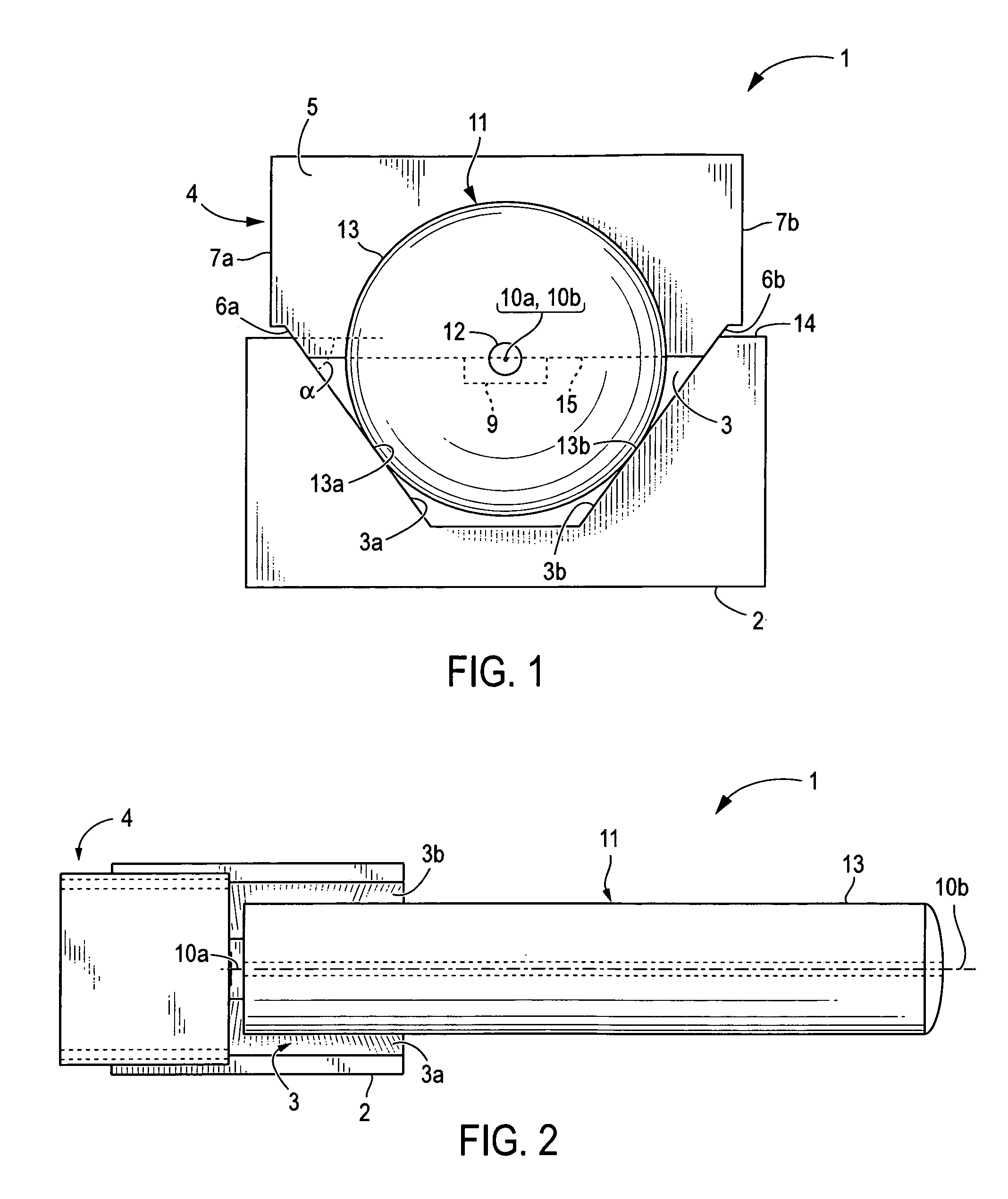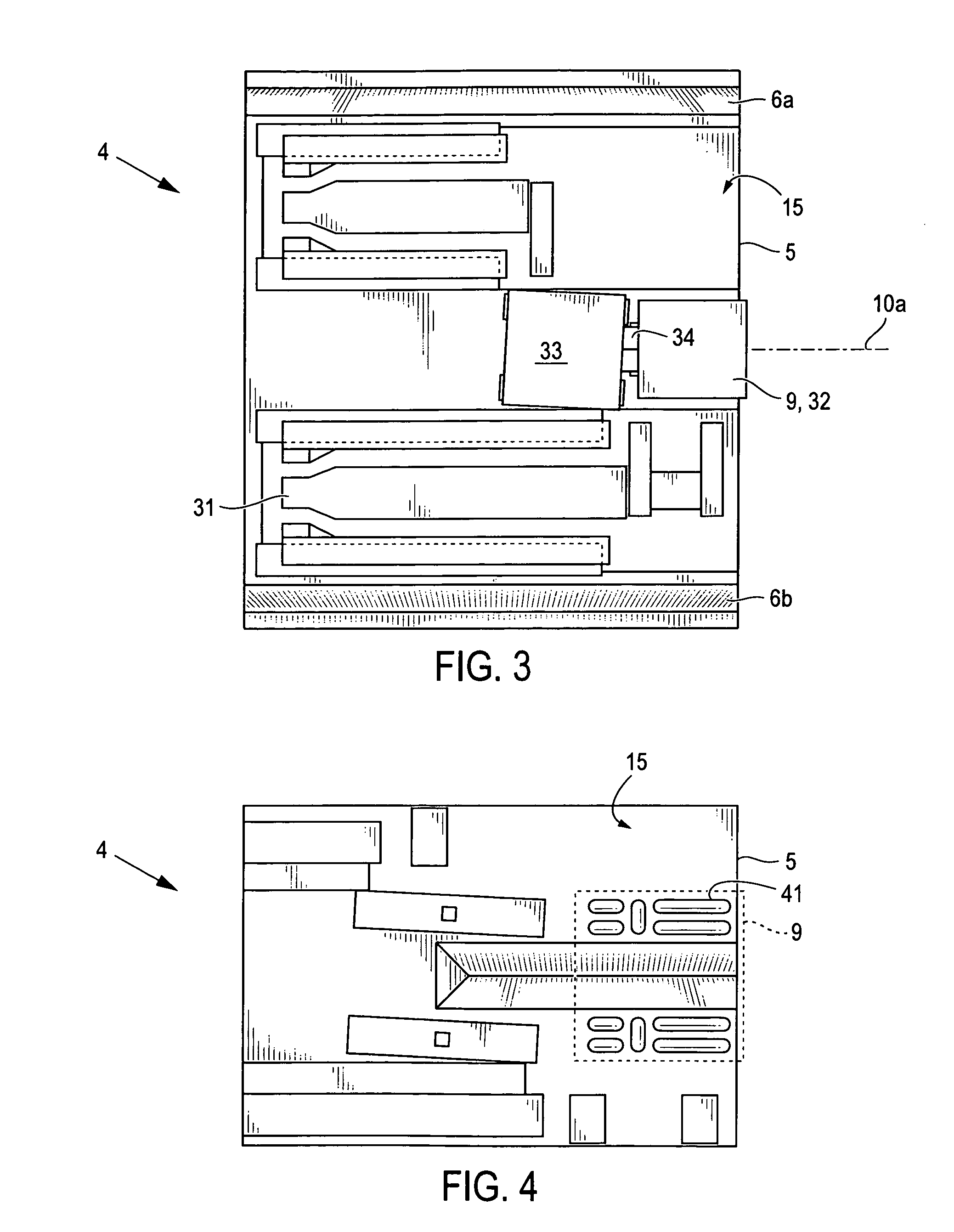Optical bench having V-groove for aligning optical components
a technology of optical components and alignment members, which is applied in the field of optical assembly to achieve the effects of accurate positioning of an opto-electric device, reducing environmental changes and manufacturing tolerances, and reducing the effect of inter-component effects
- Summary
- Abstract
- Description
- Claims
- Application Information
AI Technical Summary
Benefits of technology
Problems solved by technology
Method used
Image
Examples
Embodiment Construction
[0020]Referring to FIGS. 1 and 2, side and top views, respectively, are shown of an optical assembly 1 using the optical true position bench (TPB) approach of the present invention. The optical assembly 1 comprises a platform 2 for holding first and second optical components 4, 11 in optical alignment. Although the optical assembly shown in FIG. 1 and described herein comprises just two optical components, it should be understood that the invention is not limited in the number of optical components which may be held and aligned in the platform 2. For purposes of simplicity and to facilitate understanding, however, this description will focus on an assembly comprising just two optical components.
[0021]The platform defines a V-groove 3 with walls 3a, 3b of a certain pitch α. A first optical component 4 is disposed in the V-groove 3. The first optical component 4 has a first optical axis 10a, a reference surface 15 and two sides 6a, 6b, each side is beveled at the certain pitch α outwa...
PUM
 Login to View More
Login to View More Abstract
Description
Claims
Application Information
 Login to View More
Login to View More - R&D
- Intellectual Property
- Life Sciences
- Materials
- Tech Scout
- Unparalleled Data Quality
- Higher Quality Content
- 60% Fewer Hallucinations
Browse by: Latest US Patents, China's latest patents, Technical Efficacy Thesaurus, Application Domain, Technology Topic, Popular Technical Reports.
© 2025 PatSnap. All rights reserved.Legal|Privacy policy|Modern Slavery Act Transparency Statement|Sitemap|About US| Contact US: help@patsnap.com



